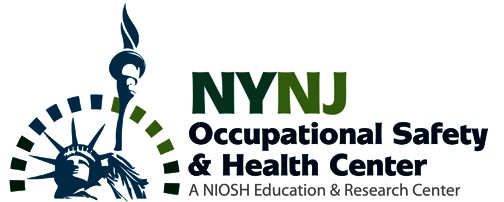Last night, a bunch of our group walked to Canada to view NIagara Falls from the Canadian side.
Today we visited Love Canal. Our colleagues from Conestoaga
Rovers and Associates presented an overview of the history of Love Canal,
including the dumping if wastes in the canal, development and design of the
landfill, and control of the wastes that a re buried on site. Many of the
environmental and health and safety regulations are now in effect because of
Love Canal, including Superfund and the creation of the National Priorities
List (NPL) of hazardous waste sites. The tour included a look at the treatment
facility on site. Then we walked on the cap of the Love Canal site. The site
looks park-like, with a few monitoring wells around the perimeter. Love Canal was de-listed in 2004, and now is
in a monitoring and treatment operation.
We dropped our colleagues from the University of Cincinnati at the Buffalo Airport. It was great having you on board and participating in our trip. We are heading back home on our bus. Another successful Historical Perspectives Tour. Thanks to all of our particpants for an enjoyable week. And a big thanks to Dave, our bus driver, for getting us around safely!




6 comments:
Until this tour, had no knowledge about the love canal, great presentation by the love canal group, even though it rained during the tour, we had a good presentation on the history of the love canal
It's a pity it was raining... I would've liked to observe the area more...shame ful how people can disregard peole welbeing
Fabulous presentation. It was nice to see the previous Love canal dump transformed into a green garden all around, thanks to the efforts of all starting with the local people and ending with president Carter.
Rafid Kakel
University of Cincinnati.
Yesterday’s ERC tour site visit was to the Miller Springs Remediation Management (Treatment) Facility at the Love Canal landfill. From the historical perspective, during the late 1970s, the community became increasing concerned about the increasing incidence of developmental malformations in offspring, and in the health of the local children attending the 99th Street school, which then closed in 1978. Following this, an elaborate sand trench-based collecting system was set up to clean the leachate from the clay lined landfill, which is as it is in the operational facility today.
At the present time, the facility collects and adsorption filters 3 to 4 million gallons of chemical leachate contaminated water from the former superfund site (deleted concern by USEPA on 9/30/2004), where there still remain containers full of hazardous chemicals (both halogenated [dioxins=endocrine disruption] & non-halogenated hydrocarbons [benzenes=toxicity to rapidly proliferative cells; i.e. aplastic anemia and then Leukemia]).
Love Canal is a characteristic paradeigm (example) of the awareness we have to pay in the environment. Environmental Medicine must be the other half of Occupational Medicine residency.
Furthermore everyone should respect the environment and think of the treasure that leaves to the next generation. Saving or just protecting the environment must be a priority for citizens, authorities and scientists. We have so many thinks to keep in mind for the Love Canal story.
No doubt this site visit was a great experience and learning opportunity
This tour have shown us the enormous negative impact that has been inherited from decades ago of policy failure & disorganization and negligence of environmental values. I guess it was also a leering experience to policy makers on levels; state, and federal agencies. It was shocking feeling to me knowing that city school administration has already knew about the land field chemical disposal prior to purchasing the land and still went ahead and purchased the land to build a public school o it.
I hope all environmentalists and related filed get the chance to visit the site.
Hicham Alnachawati, MD, MPH
Mount Sinai School of Medicine
Post a Comment